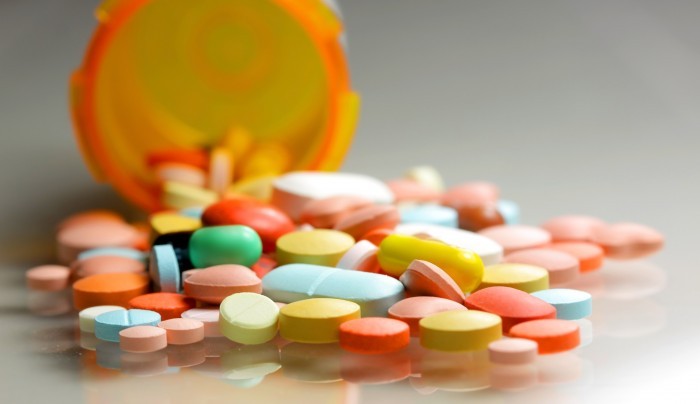Prescription Drug Spending Increased Nearly $100B from 2012 to 2016
Net prescription drug spending increased significantly over a four-year period, but rebates and discounts helped stabilize patient out-of-pocket spending.

Source: Thinkstock
- Net prescription drug spending increased from $250.7 billion in 2012 to $341 billion in 2016, according to a new report from the Pew Charitable Trusts.
The report also found that over the same period, the share of commercial insurance premiums devoted to retail prescription drug coverage increased from 12.8 percent to 16.5 percent. However, patient out-of-pocket spending remained relatively stable, partly because of increased insurance coverage and manufacturer assistance.
Americans spend more on prescription drugs each year than citizens in any other country, Pew stated. However, evaluating drug spending is challenging, because there is limited public data on how much payers and supply chain intermediaries pay for prescription medications.
“The complex drug supply and payment chain involves transactions among drug manufacturers, wholesalers, pharmacies, pharmacy benefit managers (PBMs), and health plans,” the report said.
“This analysis, using primary research and a combination of third-party and government reports and data, quantifies the share of overall spending on retail prescription drugs retained by health plans and others in the supply and payment chain.”
READ MORE: HHS Proposes Eliminating Drug Rebates to Cut Prescription Costs
Researchers set out to examine prescription drugs reimbursed through pharmacy benefits and dispensed through retail, specialty, mail-order, or long-term care pharmacies.
The group estimated total spending on retail prescription drug coverage, as well as the amount retained by each stakeholder after accounting for purchases and discounts.
Insurance coverage increased by 13.2 percent over the 2012 to 2016 time period, the researchers noted, contributing to higher overall spending on prescriptions.
While these developments led to increased patient spending on retail drugs, the share of net spending attributed to patient payments decreased over the four-year period.
“As access to prescription drug coverage expanded, aggregate patient payments also increased for retail pharmaceuticals,” the report said.
READ MORE: CA Governor Addresses Prescription Drug Costs, Healthcare Access
“From 2012 to 2016, patient payments, including both cost-sharing and premium payments, grew from $86.6 billion to $103.8 billion. As a share of net spending on retail prescription drug coverage, however, patient payments declined during the same time frame from 34.5 percent of total spending to 30.4 percent.”
Meanwhile, patient responsibility for retail prescription drug costs rose from $59.5 billion in 2012 to $65.8 billion in 2016. Yet many patients have been protected from this increase because of the expanded use of copay coupon programs and the closing of the Medicare Part D coverage gap.
“Together, copay coupons and Part D coverage gap discounts represented more than 20 percent of patient responsibility for retail prescription drug costs in 2016,” the report said.
“With the other factors noted above, these contributed to a slight decline in actual patient cost-sharing payments from 2014 to 2016, following an increase in 2013.”
Among commercial health insurers, the total value of commercial insurance premiums attributed to the pharmacy benefit increased, as did the share of insurance premiums attributed to the retail pharmacy benefit.
READ MORE: Insured Consumers Struggling With Prescription Drug Costs
From 2012 to 2016, the rise in brand name drug prices was offset by increased pharmaceutical manufacturer rebates.
“Rebates accounted for 15.8 percent of retail pharmacy benefit premiums in commercial plans in 2016, up from 9.2 percent in 2012,” the report said.
“The continued growth in both list prices and rebate volume has contributed to a larger spread between the list and net prices of brand pharmaceuticals. Although manufacturer rebates do not typically reduce patient out-of-pocket costs directly, survey respondents reported that higher rebate volume helps limit growth in member premiums.”
Pew found that there were similar trends in Medicare Part D plans.
“Growth in list prices for pharmaceutical drugs has largely been offset by growth in manufacturer rebates to Medicare Part D plans, which nearly tripled from 2012 to 2016,” the report said.
“This rebate growth has helped restrain total Medicare Part D spending increases and limited Part D enrollee premium growth. Lower premiums have also contributed to slow growth in overall Medicare Part D spending per beneficiary from 2012 to 2016, which increased just 2 percent per year on average.”
For Medicaid and other government payers, coverage payments for retail prescription drugs were offset by statutory rebates from pharmaceutical manufacturers. Among these payers, payments for retail prescription drugs have increased, due in part to Medicaid expansion and growth in per-beneficiary drug spending between 2014 and 2016.
Several factors countered spending growth in Medicaid and other government payers, Pew noted. The Affordable Care Act increased the base Medicaid rebate for brand and generic drugs, and required that rebates be paid for drugs that are covered by Medicaid managed care plans.
“These actions, combined with the Medicaid inflation penalty (which requires additional rebates when a drug’s Average Manufacturer Price increases faster than the consumer price index), contributed to a surge in the volume of Medicaid rebates for retail drugs from $13.3 billion in 2012 to $23.5 billion in 2016,” the report stated.
The results show that despite rising coverage costs, rebates and discounts have stabilized increased prices and out-of-pocket spending.
“Net spending on retail prescription drug coverage increased each year of the study period, as did the share of commercial insurance premiums for retail prescription drug coverage,” the report concluded.
“While the total cost of this coverage has increased, patient out-of-pocket spending has remained stable in recent years. Rebates and other discounts have played an increasingly important role in partially offsetting the continued growth of list prices for brand name drugs.”
